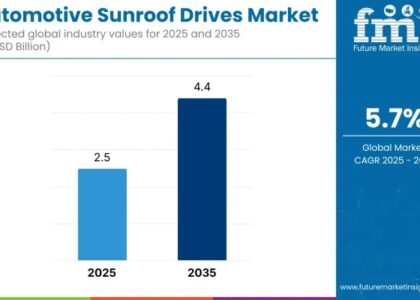The global dissolving microneedle market is projected to grow from USD 51.7 million in 2025 to USD 130.4 million by 2035, registering a promising CAGR of 9.6%. This surge in demand reflects the rising consumer preference for non-invasive, pain-free dermatological solutions. In 2024, the aesthetic and skincare industries have played a pivotal role in accelerating product commercialization, particularly across wrinkle reduction and anti-aging applications.
The dissolving microneedle market has gained significant traction in recent years as an innovative approach to drug delivery and cosmetic applications. Dissolving microneedles are minimally invasive, pain-free systems that enable the administration of drugs or active compounds directly into the skin. These microneedles, made from biodegradable and water-soluble polymers, dissolve after insertion, eliminating the need for removal and reducing the risk of infection or needle-stick injuries. Their growing appeal in both pharmaceutical and cosmetic sectors is driving a remarkable shift from traditional drug delivery methods.
This market has seen robust growth due to increasing demand for patient-friendly alternatives to injections and transdermal patches. Their use in vaccine delivery, chronic disease management, and cosmetic treatments has opened new frontiers. As the healthcare industry continues to evolve with advanced technologies, dissolving microneedles are at the forefront of this transformation, offering precision, convenience, and enhanced therapeutic efficacy.
Get Sample Report: – https://www.futuremarketinsights.com/reports/sample/rep-gb-15468
Market Trends
Several trends are shaping the future of the dissolving microneedle market. One major trend is the rising adoption of dissolving microneedles in vaccine administration. As global health agencies push for mass immunizations, these microneedles offer a viable alternative that minimizes pain and discomfort, especially for needle-phobic populations. The COVID-19 pandemic has further highlighted the need for efficient and safe vaccine delivery systems, and dissolving microneedles have emerged as a promising solution.
Another significant trend is the expanding use of dissolving microneedles in the cosmetic industry. With increasing consumer interest in anti-aging treatments and non-invasive skincare solutions, these microneedles are being incorporated into products aimed at delivering ingredients like hyaluronic acid and peptides more effectively. Skincare brands are investing heavily in research and development to harness this technology for improved product performance.
Moreover, technological advancements in material science have enabled the development of more effective and safer microneedle systems. The use of novel polymers and biocompatible materials has enhanced the reliability and efficiency of dissolving microneedles, further driving market adoption. Partnerships between pharmaceutical companies and microneedle manufacturers are also becoming more common, facilitating quicker product development and commercialization.
Challenges and Opportunities
Despite its promising outlook, the dissolving microneedle market faces several challenges. One of the major hurdles is the complexity of regulatory approvals. As a relatively new drug delivery technology, dissolving microneedles must navigate a rigorous regulatory landscape that varies by region. Manufacturers often struggle with meeting stringent safety and efficacy standards required for market entry.
Manufacturing scalability also poses a challenge. Producing microneedles that are both consistent in quality and effective in drug delivery requires advanced equipment and precision engineering. Small-scale production is feasible for research purposes, but scaling up to meet commercial demand remains difficult and expensive for many firms.
However, the opportunities within the dissolving microneedle market are substantial. As patient-centric healthcare continues to gain momentum, the demand for painless and easy-to-use drug delivery systems will rise. This creates an opening for dissolving microneedles to become mainstream, particularly in chronic disease treatment and pediatric care.
Additionally, the potential for self-administration is another compelling opportunity. Patients with diabetes, arthritis, or hormonal disorders who require regular medication can benefit greatly from microneedles that allow for at-home treatment without professional assistance. This could significantly reduce hospital visits and healthcare costs, further bolstering market growth.
Key Regional Insights
The dissolving microneedle market is experiencing growth across various regions, with some leading the charge in innovation and adoption. North America holds a substantial share of the market, driven by advanced healthcare infrastructure, strong R&D capabilities, and high healthcare expenditure. The United States, in particular, is home to many key players and has a favorable environment for clinical trials and regulatory approvals.
Europe is also witnessing notable growth, especially in countries like Germany, the United Kingdom, and France. Increasing focus on minimally invasive treatments and rising awareness about novel drug delivery methods have contributed to the region’s expanding market.
Asia-Pacific is emerging as a highly promising region for the dissolving microneedle market. Countries like Japan, South Korea, and China are investing heavily in healthcare innovation and have a strong presence in the skincare and cosmetics sectors. South Korea, in particular, is a hub for cosmetic microneedles and has played a critical role in advancing the technology for skincare applications.
Latin America and the Middle East & Africa are still in the early stages of market development. However, rising healthcare awareness and efforts to improve access to modern treatments could pave the way for future growth in these regions. Collaborations between local governments and international health organizations may accelerate the adoption of dissolving microneedles in underserved markets.
Competitive Outlook
The competitive landscape of the dissolving microneedle market is characterized by innovation, strategic partnerships, and a strong emphasis on research and development. Companies are focusing on developing new formulations and application methods to widen their product portfolios. The need to stay ahead in a rapidly evolving market has led to increased collaboration between pharmaceutical firms, biotechnology companies, and academic institutions.
Start-ups and emerging players are making their mark by introducing breakthrough technologies and securing patents for novel microneedle designs. These companies often seek partnerships with established firms for commercialization and regulatory support. At the same time, big pharmaceutical companies are acquiring smaller firms or entering licensing agreements to enhance their capabilities in this niche segment.
Price competitiveness, regulatory compliance, and product efficacy are key factors determining market success. Companies that can streamline production processes while maintaining high safety standards are better positioned to capture significant market share. With the market still in a relatively early phase, there is considerable room for differentiation and growth.
Top Companies
Several companies are leading the charge in the dissolving microneedle market with innovative technologies and strategic expansions. Companies like 3M, Becton, Dickinson and Company, and Raphas Co., Ltd. have established themselves as pioneers in the field, offering a wide range of microneedle solutions for both medical and cosmetic use.
3M has been at the forefront of microneedle research, leveraging its expertise in drug delivery systems to develop reliable and scalable microneedle platforms. Becton, Dickinson and Company is known for its emphasis on patient safety and product efficacy, making significant strides in the development of microneedle technologies for immunizations.
Raphas Co., Ltd., a South Korean company, has made significant progress in cosmetic microneedles and is recognized for its advanced manufacturing processes. Other notable players include Micron Biomedical, Nanopass Technologies, and Debiotech SA. These companies are contributing to the market’s expansion by investing in clinical studies, regulatory approvals, and international collaborations.
Explore In-Depth Analysis-Click Here to Access the Report:- https://www.futuremarketinsights.com/reports/dissolving-microneedles-market
Segmentation Outlook
The dissolving microneedle market can be segmented based on application, end user, and material composition. In terms of application, the market is divided into drug delivery, vaccine administration, and cosmetic treatments. Drug delivery holds the largest share due to its broad range of uses in managing chronic diseases. Vaccine administration is gaining traction, especially with rising global immunization efforts. Cosmetic treatments are also a rapidly growing segment, driven by consumer demand for non-invasive skincare solutions.
By end user, the market caters to hospitals, dermatology clinics, research institutions, and home care settings. Hospitals and clinics are the primary users, given the need for controlled and sterile environments. However, with advancements in self-application devices, home care is expected to witness significant growth in the near future.
Based on materials, the market includes microneedles made from polysaccharides, carboxymethyl cellulose, hyaluronic acid, and other biodegradable polymers. The choice of material affects the microneedle’s mechanical strength, dissolution rate, and biocompatibility, making it a crucial factor in product development.
As the market continues to evolve, understanding these segmentation dynamics will be key for stakeholders aiming to target the right audience and meet specific healthcare needs effectively.
About Future Market Insights (FMI)
Future Market Insights, Inc. (ESOMAR certified, recipient of the Stevie Award, and a member of the Greater New York Chamber of Commerce) offers profound insights into the driving factors that are boosting demand in the market. FMI stands as the leading global provider of market intelligence, advisory services, consulting, and events for the Packaging, Food and Beverage, Consumer Technology, Healthcare, Industrial, and Chemicals markets. With a vast team of over 400 analysts worldwide, FMI provides global, regional, and local expertise on diverse domains and industry trends across more than 110 countries.
Contact Us:
Future Market Insights Inc.
Christiana Corporate, 200 Continental Drive,
Suite 401, Newark, Delaware – 19713, USA
T: +1-347-918-3531
For Sales Enquiries: sales@futuremarketinsights.com
Website: https://www.futuremarketinsights.com
LinkedIn| Twitter| Blogs | YouTube





